
Today, I am going to talk about the must-have Bible study tools available. As a child, when the first Jurassic Park movie was released, I heard the word “paleontologist” for the first time. I thought it would be cool to dig up old dinosaur bones for a living! Paleontologists use various tools to unearth the ancient past. They carry field kits that include items such as GPS devices, rock hammers, chisels, tape measures, brushes, and more.
We will cover an array of tools, each with specific functions to enhance your study experience. With these tools in your field kit, you will don your biblical excavator attire and learn how to unearth Christian truths and apply them to your life. There is a vast sea of resources available, and I am here to guide you towards those that are user-friendly and beneficial for everyone.
Tool #1: A Good Study Bible
The cornerstone of effective Bible study tools is a good study Bible. First things first, you’ll want to choose the translation that resonates with you the most. While exploring other translations can be beneficial, it’s important to find one that feels right and make it your primary Bible.
A quality study Bible will come equipped with extensive cross-references. These serve as helpful signposts, connecting related passages throughout the Bible. They point you to passages with similar themes, topics, or even wording, acting as a roadmap to understanding the interconnectedness of different parts of the Bible. You can typically find these references in the margins or at the bottom of the page. Just be sure your study Bible includes them.
Look for a study Bible that provides various study aids. These can include summaries at the beginning of each book, outlines, maps, charts, and diagrams. Additionally, consider the font size; opting for a larger font size (10+) can make reading easier in the long run.
Now, let’s talk about study notes: Nearly every study Bible on the market includes them. These notes, written by the authors or editors, aim to clarify passages you’re reading. While they can be helpful, an abundance of notes may hinder your independent study. I recommend choosing a study Bible with a moderate amount of notes per page. And if this is your first time purchasing a study Bible, don’t fret too much. The best Bible for you is the one you’ll actually use.
If you’re in search of a new study Bible, I highly recommend the Life Application Study Bible. It encompasses all the features mentioned above, offers a larger font for better readability, and is available in various popular translations. It’s a solid choice for anyone seeking a reliable study Bible. You can find links to the NIV and NLT versions below.
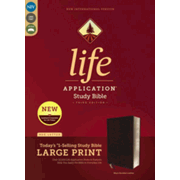 |
NIV Life Application Study Bible, Third Edition, Large Print, Bonded Leather, Black By Zondervan |
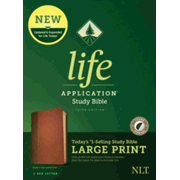 |
NLT Life Application Large-Print Study Bible, Third Edition–soft leather-look, brown, mahogan, red letter (indexed) By Tyndale House |
Tool #2: A Concordance
A concordance serves as a comprehensive index for the Bible, offering an alphabetically arranged list of every word in the text along with corresponding verses. Should you seek every occurrence of the word ‘love’ in the Bible, a concordance proves invaluable in directing you to each instance. It stands as a powerful resource for delving into the biblical perspective on various subjects.
Remarkably, the term ‘love’ appears a staggering 528 times throughout the Bible. Yet, its nuanced meanings necessitate careful examination. In this regard, the concordance proves indispensable, allowing for a thorough understanding of ‘love’s’ usage across the biblical narrative. Such insight proves invaluable when exploring the Bible’s teachings on specific themes.
When it comes to premier concordances, none surpasses Strong’s Exhaustive Concordance of the Bible by James Strong. Aligned typically with the King James Version or the New American Standard Bible, it remains the epitome of concordance excellence. However, should these translations not align with your preferences, rest assured that Strong’s Concordance remains a dependable tool for explaining word usage throughout the Bible. Its enduring reputation as the foremost concordance endures to this day.
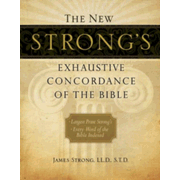 |
The New Strong’s Exhaustive Concordance of the Bible, Large-Print Edition By Thomas Nelson |
Tool #3: A Bible Dictionary
A Bible dictionary is like your regular dictionary, but it focuses more on how the Bible uses words rather than their meanings in today’s world. It’s super helpful for understanding all the people, places, and events mentioned in the Bible. Think of it as your go-to guide for getting the context right.
Take, for example, the Holman Illustrated Bible Dictionary. It’s got this cool entry for the Sea of Galilee. Not only does it describe the lake, but it also tells you about all the different names it’s had throughout biblical history. Plus, it’s got two pictures of the lake and throws in loads of scripture references to help you get the full picture. If you are looking for a solid Bible dictionary as a beginner, this is what I would choose.
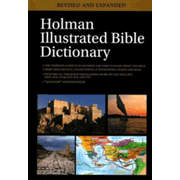 |
Holman Illustrated Bible Dictionary, Revised and Expanded By Holman Reference |
Tool #4: A Bible Atlas
A Bible atlas is basically a book full of maps. It’s super useful for getting a grip on the geographical backdrop of the Bible. You know, the Ancient Near East—the place where all those Bible stories went down. And let’s face it, some of those names can sound pretty weird to us. But a Bible atlas helps clear things up. Ever wondered how far Egypt was from the Promised Land? Or how many miles Mary and Joseph had to trek to reach Jerusalem? And where exactly did that famous battle of Jericho happen? Well, that’s where atlases come in handy, answering all these burning questions.
One awesome pick out there is the Crossway ESV Bible Atlas. Now, don’t stress if the ESV isn’t your go-to translation. This atlas is jam-packed with top-notch visual and informative content that’s helpful no matter which translation you prefer. It’s been meticulously researched and beautifully illustrated, offering a deep dive into the lands and settings mentioned in the Bible. With detailed maps, insightful commentary, and stunning visuals, this atlas not only helps you visualize the journeys of biblical characters but also lets you connect more deeply with the cultural and geographical backdrop of the Bible’s stories.
 |
Crossway ESV Bible Atlas By John D. Currid & David P. Barrett / Crossway |
Tool #5: A Bible Commentary
Rounding out your Bible study toolkit, we’ve got the Bible commentary. While your study Bible might offer some insights here and there, a commentary takes it up a notch by diving into every single verse of the Bible. The folks behind commentaries aim to explain each passage thoroughly, and they’ve got the space to do it justice. So, when you’re on the hunt for a commentary, aim for one that delves into every single verse rather than just skimming over larger chunks of the Bible.
Take, for instance, The Bible Guide by Andrew Knowles. It’s a solid resource, no doubt, but it tends to cover broader sections of scripture in a concise manner. Sometimes, it misses out on addressing specific passages altogether. On the flip side, you’ve got The Bible Knowledge Commentary, which meticulously goes through the Bible verse by verse, leaving no stone unturned.
The Bible Knowledge Commentary comes in a two-volume set. It is a classic resource and highly recommended. It has been used in Dallas Theological Seminary classes for decades. If you are looking to invest in a single-volume commentary, The Believer’s Bible Commentary is a wonderful resource. It provides insightful and accessible interpretations of scripture, making it an invaluable resource for both new believers and seasoned scholars alike.
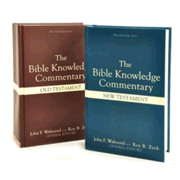 |
The Bible Knowledge Commentary: Old & New Testament, 2 Volumes By Edited by John F. Walvoord & Roy B. Zuck / David C Cook |
 |
Believer’s Bible Commentary, Second Edition By William MacDonald, edited by Art Farstad / Thomas Nelson |
Bonus Tool #6: A Bible Handbook
While a Bible handbook isn’t exactly a must-have in your Bible study toolkit, it can definitely come in handy. These handbooks typically offer similar info to the other tools we’ve talked about, but because of space constraints, they can’t dive as deep into each topic. Think of a Bible handbook like a jack-of-all-trades—he’s good at a bunch of stuff, but he’s not a master at any one thing. These handbooks are perfect for getting the basics down, especially if you’re just starting out. That said, they don’t quite have the in-depth word study abilities of a concordance, the precise definitions of a Bible dictionary, or the detailed maps of a Bible atlas. If you’ve got a bit of extra cash to spare, grabbing one of these is still a smart move.
One of my personal favorites in this category is The Complete Guide to the Bible by Stephen Miller. It’s awesome for getting a solid background on both the Old and New Testaments, and it gives a nice overview of each book in the Bible. If you’re looking to grasp the big picture of the Bible, this is definitely the place to start.
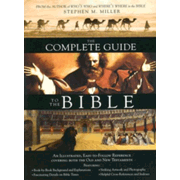 |
The Complete Guide to the Bible By Stephen M. Miller / Barbour Publishing |
As we wrap up our exploration of Bible study tools, it’s clear that we’ve equipped ourselves with some serious gear for digging deep into scripture. From the trusty study Bible to the versatile concordance, the enlightening dictionary, the revealing atlas, and the insightful commentary, we’ve got our hands full of resources. Think of it like gearing up for a grand adventure, where every tool is like a map leading us to new discoveries. Just like how paleontologists use their tools to uncover ancient fossils, we’re using ours to uncover timeless truths. So, let’s get out there, roll up our sleeves, and start digging into the riches of the Bible. With these tools in hand, there’s no telling what amazing insights we’ll uncover or how they’ll enrich our journey of faith. Happy exploring!
Here’s a little transparency: Our website contains affiliate links. This means if you click and make a purchase, we may receive a small commission. Don’t worry, there’s no extra cost to you. It’s a simple way you can support our mission to bring you quality content.
